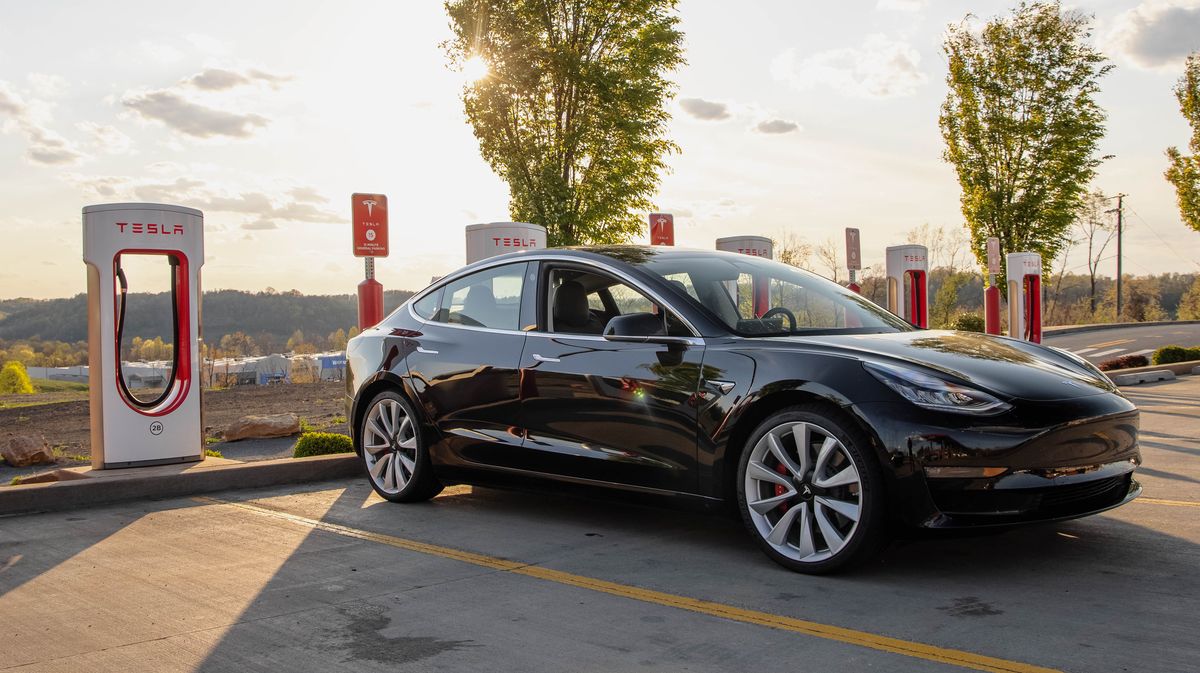Introduction
Tesla, a pioneer in electric vehicle (EV) technology, has revolutionized the way we think about transportation. One of the critical aspects of owning a Tesla is understanding the charging process and how long it takes to power up your electric ride. In this comprehensive guide, we’ll delve into the world of Tesla charging speed, exploring different charging levels, factors affecting charging times, variations across Tesla models, charging speed enhancements, real-world scenarios, and the exciting future of Tesla charging technology.
Tesla Charging Levels
When it comes to charging your Tesla, there are different levels of charging options available, each catering to specific needs and preferences. Understanding these charging levels is essential to make the most of your electric driving experience.
Level 1 Charging
Level 1 charging, often called “trickle charging,” is the most basic and widely accessible way to charge your Tesla. It involves plugging your vehicle into a standard household electrical outlet using the Mobile Connector provided by Tesla. While Level 1 charging may be the slowest option, it offers a convenient solution for overnight charging at home or in situations where faster charging options are not readily available.
Level 2 Charging
Level 2 charging represents the most common and practical charging method for Tesla owners. This level of charging employs a higher-powered charger, typically installed at home, workplace, or found at various public charging stations. Compared to Level 1, Level 2 charging significantly reduces charging time, making it an excellent choice for daily charging routines. It provides a balanced charging speed, ideal for maintaining your Tesla’s battery for regular use.
Level 3 (Supercharger) Charging
When you require rapid charging for your Tesla, Level 3 charging, often referred to as “Supercharger” charging, is the go-to option. Tesla’s Superchargers are strategically located along highways and within urban areas, designed to provide lightning-fast charging experiences. These stations offer unparalleled charging speeds, making them the preferred choice for long-distance travel and minimizing downtime during road trips. Superchargers are engineered to replenish your Tesla’s battery swiftly and efficiently, ensuring you can get back on the road with minimal delay.
Factors Affecting Tesla Charging Speed
The speed at which your Tesla charges is influenced by several crucial factors. Understanding these factors will help you optimize your charging experience and make the most of your electric vehicle.
Battery State of Charge (SOC)
Battery State of Charge (SOC) is pivotal in determining the time required to charge your Tesla. SOC refers to the current level of charge in your battery. When you plug in your Tesla with a low SOC, the charging process typically takes longer compared to topping up a battery that is already partially charged. Charging from a lower SOC requires more time because the charging process often begins at a slower rate to protect the battery. As the battery reaches a higher SOC, the charging rate gradually decreases to ensure the battery’s health and longevity. Therefore, it’s advisable to plan your charging sessions strategically. If you have the flexibility, aim to charge when your Tesla’s SOC is not critically low to save time.
Charger Power Output
The charger power output is another critical factor influencing charging speed. Chargers come in various power levels, and the charging speed is directly proportional to the charger’s output. Tesla provides various charging options, including the Wall Connector, home charging, and Superchargers, each with a unique power output. To make the most of your charging time, choosing the right charger for your needs is essential. Superchargers are your best bet if you’re on a long trip and need a quick charge. However, for everyday charging at home, a Level 2 charger might be the most efficient choice.
Battery Temperature
The temperature of your Tesla’s battery also affects charging speed. Battery temperature can impact the efficiency of the charging process. Extreme cold or hot temperatures can slow down charging and even reduce the battery’s overall capacity over time. Tesla vehicles have advanced battery management systems that help regulate temperature during charging. For example, in cold weather, the battery may heat itself to optimize charging speed.
Conversely, in hot weather, the system may cool the battery to prevent overheating. To ensure optimal charging speed, it’s advisable to park your Tesla in a sheltered area when extreme weather conditions are expected. This can help maintain the battery’s temperature within the ideal range, ensuring faster and more efficient charging.
Different Tesla Models, Different Charging Time
Regarding Tesla electric vehicles, one size does not fit all, and this principle extends to the time it takes to charge them. Tesla offers a range of models, each with its unique specifications and charging capabilities. This section will delve into the charging time for some of the most popular Tesla models: the Model 3, Model S, Model X, and Model Y.
Tesla Model 3 Charging Time
The Tesla Model 3 is one of the most sought-after electric cars globally, known for its impressive range and affordability. Charging time for the Model 3 can vary depending on several factors, including the battery capacity and the type of charger used. For the Standard Range Plus Model 3, equipped with a 54 kWh battery pack, a Level 1 charger (120V) can take approximately 48 hours for a full charge from empty to 100%. Level 2 charging (240V) significantly improves this time, typically requiring about 8-10 hours for a full charge. However, for faster charging, Tesla’s Superchargers are the way to go. On a Supercharger, you can get up to 170 miles of range in just 30 minutes, making long-distance travel with the Model 3 a breeze.
Tesla Model S Charging Time
The Tesla Model S is renowned for its luxury, performance, and impressive electric range. Charging time for the Model S varies depending on the battery size, with options ranging from 75 kWh to 100 kWh. Using a Level 1 charger, the Model S can take up to 58 hours for a full charge with a 75 kWh battery. However, this time reduces significantly with a Level 2 charger, typically taking around 10-12 hours for a full charge. The Model S, like all Teslas, benefits greatly from Supercharger stations. With a Supercharger, you can gain around 170 miles of range in 30 minutes, making it a practical choice for long journeys or quick top-ups.
Tesla Model X Charging Time
The Tesla Model X is Tesla’s electric SUV, combining utility with the brand’s signature electric performance. Charging time for the Model X are similar to the Model S, as they share similar battery options. With a Level 1 charger, charging a Model X with a 75 kWh battery can take up to 58 hours. Level 2 charging reduces this time to approximately 10-12 hours. Once again, Superchargers offer the fastest charging experience for the Model X, allowing you to add around 170 miles of range in just half an hour.
Tesla Model Y Charging Time
The Tesla Model Y, known for its versatility and compact SUV design, shares charging characteristics with the Model 3 since they are built on the same platform. For the Standard Range Plus Model Y (54 kWh battery), a Level 1 charger can take around 48 hours for a full charge, while a Level 2 charger typically reduces the time to 8-10 hours. When it comes to quick charging on a Supercharger, the Model Y performs similarly to the Model 3, delivering up to 170 miles of range in just 30 minutes.
Charging Speed Enhancements
Charging your Tesla is a routine part of owning an electric vehicle, and while the process is already convenient, there are ways to enhance charging speed and efficiency. Here are some valuable tips and techniques to help you get the most out of your Tesla’s charging experience:
- Upgrade Your Home Charger: If you charge your Tesla at home, consider installing a Level 2 charger. These chargers offer faster charging speeds than standard household outlets, making it more convenient for daily use.
- Time Your Charging: Electricity rates often vary throughout the day. Charging during off-peak hours can be more cost-effective and may result in faster charging, as there is less demand on the grid.
- Keep Your Battery Warm: In cold weather, pre-condition your battery before charging to ensure it’s at an optimal temperature. A warm battery charges more efficiently.
- Monitor Battery Health: Regularly check your Tesla’s battery health through the mobile app. Maintaining a healthy battery ensures it can charge at its maximum rate.
- Avoid Frequent Deep Discharges: Avoid letting your battery drop to very low states of charge regularly. Charging from a higher SOC is typically faster.
- Use Scheduled Charging: Tesla allows you to set a specific charging schedule. This can be handy for ensuring your car is charged and ready when you need it without overcharging.
- Keep Charging Connectors Clean: Dust and debris on charging connectors can affect the charging speed. Keep them clean to ensure a reliable connection.
Conclusion
The future of Tesla charging speed promises even more exciting developments. As Tesla expands its fleet and continues to refine its technology, we can expect faster and more efficient charging experiences. Advanced battery technology will likely play a pivotal role, allowing for quicker charging while maintaining battery health. Furthermore, the charging infrastructure is poised for substantial growth, with more Superchargers and charging stations being deployed worldwide. Moreover, many EV chargers are now compatible with Tesla cars, giving Tesla owners a broader range of choices when charging their vehicles. This interoperability ensures that Tesla owners have even more flexibility and convenience in the rapidly evolving world of electric mobility.
Post time: Nov-09-2023

 Portable EV Charger
Portable EV Charger Home EV Wallbox
Home EV Wallbox DC Charger Station
DC Charger Station EV Charging Module
EV Charging Module NACS&CCS1&CCS2
NACS&CCS1&CCS2 EV Accessories
EV Accessories

